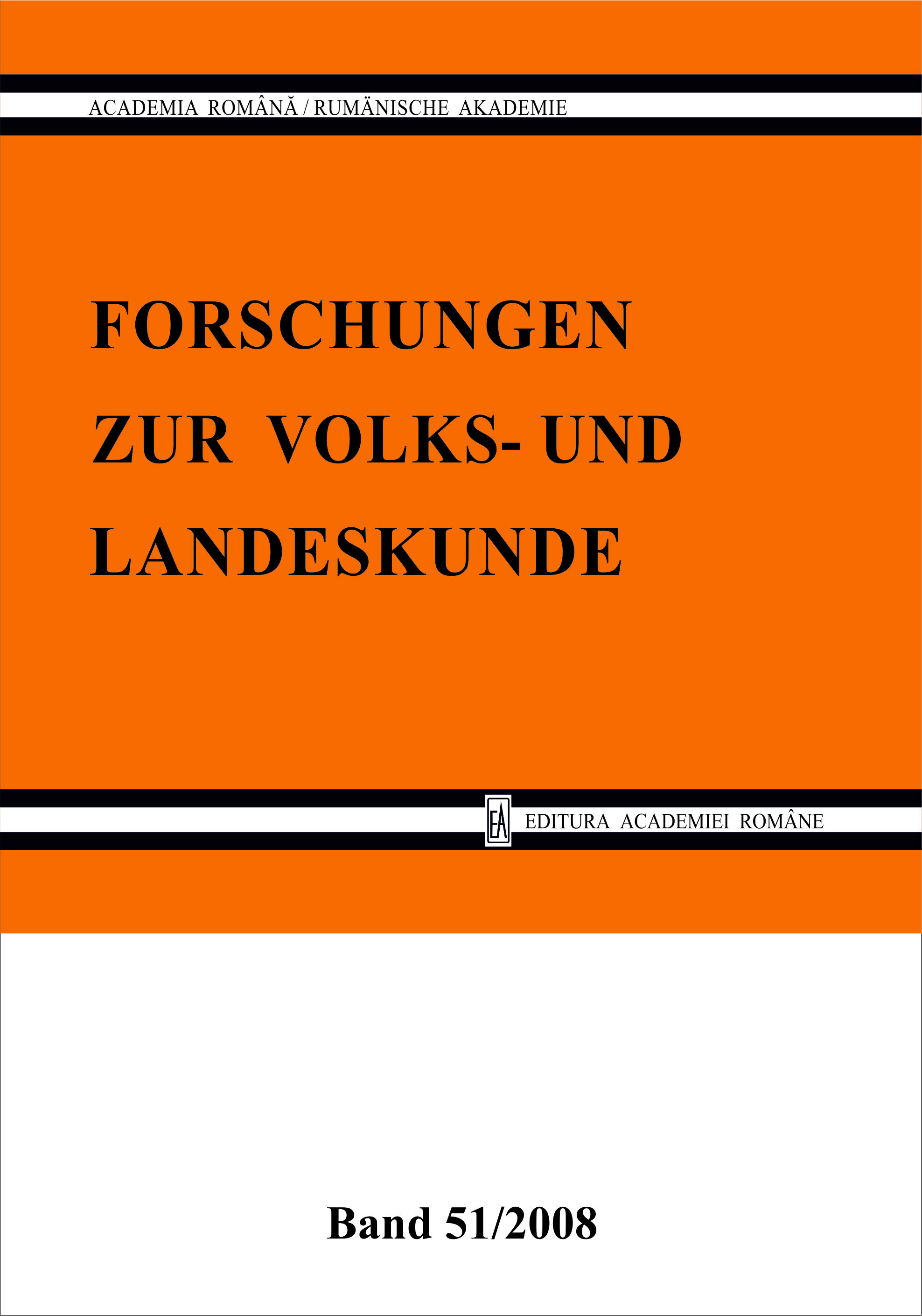

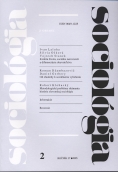
Keywords: Methodology the history of Slovak sociology; the systematisation; sociological theories
Methodological Issues of Studying the History of Slovak Sociology. This study compares two methodological approaches towards the examination of the history of sociology. The first one, the systematisation of sociological theories, deals mainly with the analysis and systematisation of sociological knowledge. The second approach is directed primarily at the history as such, and is therefore more descriptive. On the other hand, it also enables one to uncover the development contexts of sociology as a scientific discipline. The author suggests that the historic approach contributes more, because the systematisation of sociological theories has a higher significance for the investigation of the development of sociology in larger units (for example, within whole world, a continent, or in countries rich in sociological production). In the next part, it is argued that in respect to the particularities of Slovak sociology (i.e. an important influence of non-scientific factors, scarce sociological theory, the “unimportance” of Slovak sociology, influence from other national sociologies) it is advantageous to take a historical approach and focus mainly on the relevant nexus of its development and interaction with society.
More...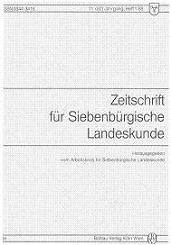
Keywords: History; Forest Legislation; Transylvania
Die vorliegende Arbeit verfolgt nicht das Ziel, die Geschichte der Forstgesetzgebung Siebenbürgens lückenlos darzustellen, sondern versucht die bisher sehr verstreut veröffentlichten Daten zu diesem Thema zusammenzufassen, um einen geschlossenen Überblick zu gewähren. Die Einteilung des gesammelten Materials auf Zeitabschnitte erfolgte anhand bedeutender politischer Ereignisse für Siebenbürgen, die wirtschaftliche Auswirkungen auch auf die Nutzung des Waldes hatten.
More...
Keywords: postmodernism; ideologie; avangarde; Occident; Europa de Est
Lucrarea propune o evaluare a ideii postmoderne în accepţiunea sa iniţială, consacrată, în raport cu situaţia generată în estul Europei de restricţii ideologice. Faţă de situaţiile oferite de opere, modificări de conţinut şi atitudini, în acest context relevăm o „altfel” de artă care face obiectul disputelor uneori aprinse în jurul conceptului, al pasajului pe care-l examinăm. Stimulaţi de relaţia artei din ultimele decenii din România în raport cu acest concept, am folosit sursele care i-au dat naştere şi am făcut o analiză în lucrarea „Ideea Postmodernă. Tendinţe în artele vizuale din România”. Întrucît concluzia finală nu e lipsită de riscuri, sunt necesare completări suplimentare din perspectiva contextului regional, motivate de asemănări şi deosebiri. Prezenta lucrare evoluează începînd cu examinarea condiţiilor în care s-a născut şi implicit a definiţiilor particulare. Desfăşurarea, istoria, originea sa occidentală, particula-rităţile din estul ideologizat, creează o ţesătură complexă, fapt pentru care expunem interpretările apărute, posibilele erori asociate instrumentelor de lucru distincte de caracteristicile postmodernismului.
More...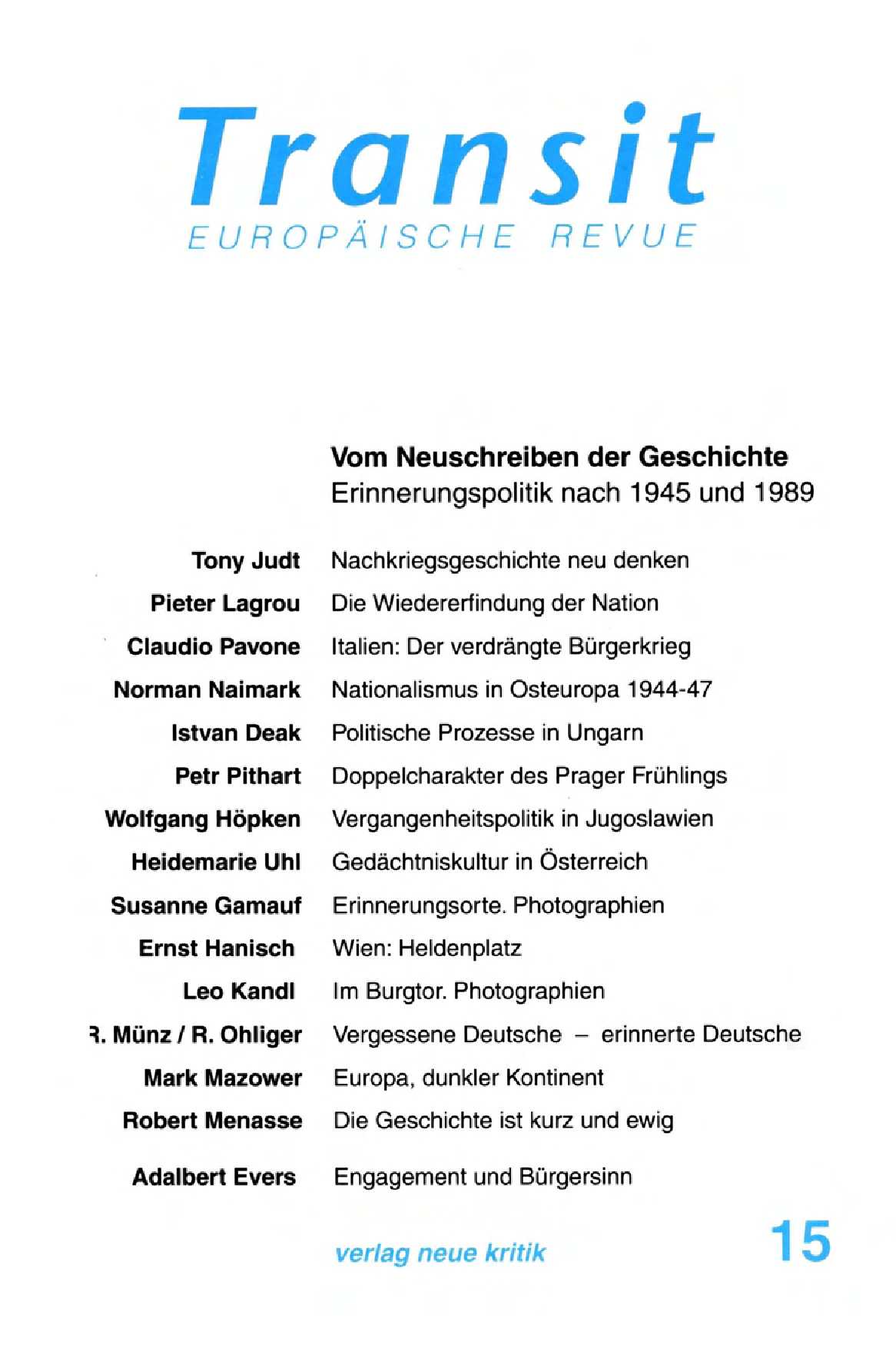
Keywords: Erinnerungsorte; Sakralen ; Profanen
»Erinnerungsorte« nach Pierre Nora sind Zwitterorte.1 Sie liegen zwischen dem Sakralen und Profanen; sie sind »dicht gesponnen aus Leben und Tod«; sie sind Repräsentationen kollektiver Wahrnehmungen und Bewertungen, sind Ausdruck der jeweils herrschenden Macht und Vergegenwärtigung kollektiver Identitäten. Der Erinnerungsort Heldenplatz ist obsessiv von einem Ereignis besetzt. Am 15. März 1938 meldete der»Führer und Kanzler der deutschen Nation und des Reiches«, Adolf Hitler, hoch vom Balkon der Neuen Hofburg her, »vor der deutschen Geschichte« - jenem übernatürlichem Wesen, das mit der »Vorsehung« verschmolz - den Eintritt seiner Heimat in das Deutsche Reich. Die nationalen Sehnsüchte des 19. Jahrhunderts schienen erfüllt. Der Strom der österreichischen Geschichte mündete, so schien es, in den Hauptstrom der deutschen Geschichte.
More...Keywords: Leadership; Leadership Development Programs; Leadership Effectiveness; Cross Cultural Understanding; High-Context Culture;
The interest in leadership continues to grow over the past few decades. Leadership Development Programs (LDPs) have become a priority for all sectors, especially for the public sector. However, LDPs tend to be based on Western leadership theories, and predominantly utilize Western leadership development approaches, and do not consider the influence of national culture in their utilization, namely high-context cultures, as exists in the United Arab Emirates (UAE). This exploratory study focuses on elucidating leadership conceptualizations among Emirati leaders identifying their perceptions of the factors that impact on LDPs and leadership outcomes in the UAE public sector. Semi-structured interviews were conducted with 10 leaders from three Dubai government organisations and data were analyzed using NVivo 10. The significance of the findings of the study are: (1) leadership conceptualizations were based on the common themes of inspiring others and communication, (2) mentoring and coaching were noted to be among the best mechanisms utilized in LDPs, (3) leadership challenges included access to financial resources, adapting to ‘smart’ government, and building and retention of leaders– hence the need for effective LDPs. The study provides a unique and significant contextual contribution highlighting improvement in opportunities for leadership development programs in the UAE public sector.
More...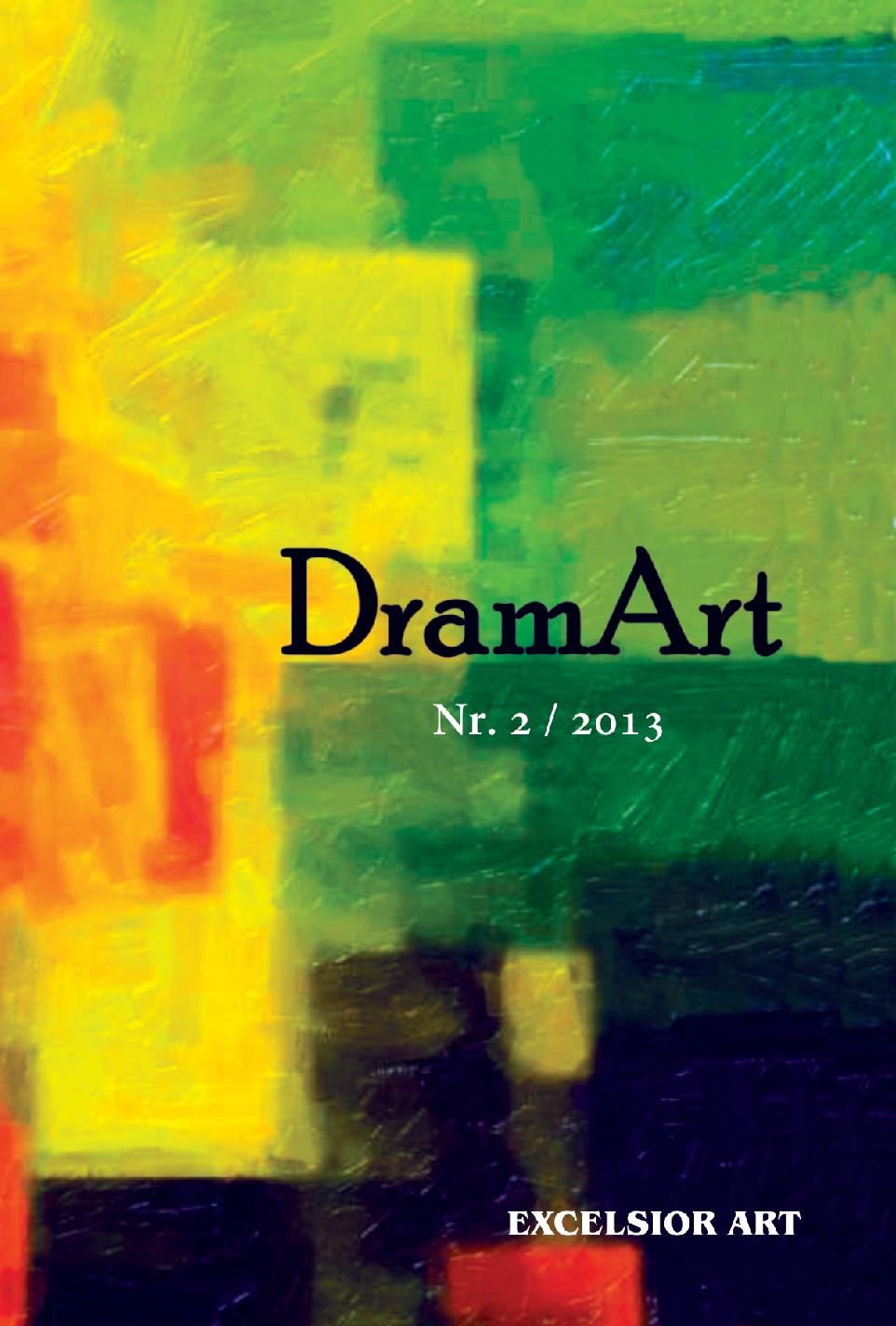
Keywords: Robert Wilson; aesthetic of the dramatic figures; theatre of images; slow motion
Büchner’s drama Leonce and Lena becomes in the vision of Robert Wilson something in between a theatrical performance and a musical production, where two main aesthetic components occur: sound and visual component on the one side, composition of the dramatic figure on the other side. The dramatic figures move during the performance like “automates” resembling the Über-Marionette concept of Craig, the bodies revealing the specific Wilsonian slow motion rhythm, generating a kind of human-pictures, always present in his so called “theatre of images”.
More...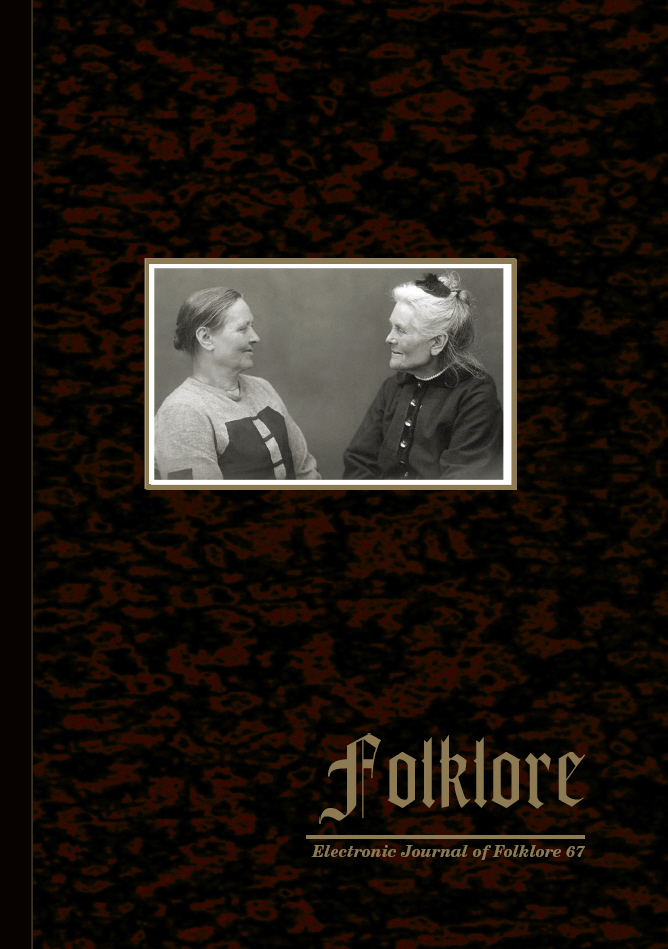
Keywords: grammatical phrases; language history; lexis; Lutheran hymns; morphological categories; runosong; written versus oral culture; word frequency;
In the eighteenth century, songs of two essentially different types of culture were present in the repertory of the Estonian-speaking community: folksongs and hymns. The old tradition of folksongs (regilaul or runosong) representing the indigenous oral culture was still alive. At the same time, since the sixteenth century, more and more elements of European (Christian) written culture had penetrated into the mental world of Estonians. The structures of literary language (and thinking based on written texts in a broader sense) were transferred into Estonian mainly by means of translations of ecclesiastical literature. For certain socio-historical reasons, influences of literacy may have mainly reached Estonians through the translations of Lutheran hymns, which became especially popular in the eighteenth century. This was the century in which structures of indigenous oral culture and those of European written culture probably still functioned in the mental world of Estonians separately from each other. Only in the nineteenth century the two sets fused into literary Estonian, and the modern Estonian culture was born. In order to understand the mechanics of the genesis of modern Estonian, the present article juxtaposes the sublanguages representing the situation in the eighteenth century (prior to the fusion). The text-corpora of folksongs and Lutheran hymn translations are analysed on lexical, morphological, and morphosyntactical levels.
More...
Keywords: Entrepreneurship; Risk perception; Entrepreneurial intention; Individual resources; Employed; Unemployed;
Aim: The changes in the nature of economic and social issues has renewed the attention on the role of entrepreneurship, and point to a multifaceted way of how entrepreneurship activities can mediate and foster sustainable development and social welfare. Recent research on entrepreneurship has redirected attention away from the entrepreneur as an individual with inborn personality dispositions and more towards entrepreneurship competence as a composition of skills and attitudes interacting with a range of factors affecting individual and his/her work and life circumstances. In this paper we point to the way risk perception and entrepreneurial intentions are associated with the entrepreneurial individual resources of the employed and unemployed. Method: The online questionnaire was completed by 413 individuals, 23 respondents were excluded from analysis because of their work status (entrepreneurs). Data was collected using the survey agency panel of respondents across Slovakia. The period of data collection was November 2017. The final sample consisted of 390 respondents, 182 males (46.7 %), 208 females (53.3 %) with an age range between 18 – 50 (M=32,37).193 respondents were currently unemployed (49.5%) and 197 employed (50.5%). The majority of the sample had high school diplomas (56.2 %), followed by a master´s degree (33.8 %), a bachelor´s degree (7.9 %), and a doctorate (1.8 %). To secure the comparability of employed and unemployed respondents the composition of these two groups was controlled. The current paper aims to contribute to the studies of entrepreneurship through evidence of the interaction between entrepreneurial intentions, risk perception and entrepreneurial resources. Additionally, the context of employment and unemployment status is considered. The following research questions were formulated: 1. Do employed and unemployed people differ in their entrepreneurial intentions? 2. Do they differ in the entrepreneurial risk perception? 3. Do employed and unemployed people see their entrepreneurial resources differently? 4. Is there a correlation between risk perception and entrepreneurial intention and is it significant for both groups of respondents (employed and unemployed)? 5. Is there a difference between the employed and unemployed in terms of the associations between the entrepreneurial resources and the intention to enterprise? 6. Is there a difference between the employed and unemployed in terms of the associations between the entrepreneurial resources and the entrepreneurial risk perception? 7. Do internal and external resources and the employment status stand as predictors of entrepreneurial risk perception and entrepreneurial intention? Results: This paper contributes to the field of entrepreneurship studies by proposing that perceived individual resources for enterprising activity are relevant in the research of entrepreneurial intention and risk perception. When comparing the subjective perception of the entrepreneurial resources, sufficiency employed and unemployed “created” the same ranking starting with the internal resources at the top: education, skills, relevant personality characteristics and experience; ending with two external resources: sufficient social capital and needed financial capital. The results show that employed and unemployed people in our sample did not significantly differ either in intention or in risk perception. However, they do differ in the perception of external entrepreneurial resources when employed respondents reported a significantly higher level of them in comparison to unemployed. We found that perceived risk which was often sought to function as a barrier for being open to entrepreneurial opportunities correlated negatively with the external entrepreneurial resources of both the employed and unemployed. The differences between the employed and unemployed in risk perception were present in association with internal individual resources; where the risk perception of employed correlated significantly negatively while in the sample of unemployed there was no significant correlation present. Interestingly, the outcomes were different for the association between entrepreneurial intention and perceived individual resources for enterprising. In both samples of the employed and unemployed the correlations between intention for enterprising and individual´s internal and external resources were all positively significant. When identifying predictors of entrepreneurial risk perception, two out of three predictors in the regression model were significant: external resources and employment status. Results confirmed that lower level of external entrepreneurial resources and being employed are both predictors of higher level of entrepreneurial risk perception. Further, when identifying predictors of entrepreneurial intention two predictors in the regression model were significant: internal and external resources. Results indicated that higher level of internal and external entrepreneurial resources were predicting a higher level of entrepreneurial intention. The employment status turned out not to be a significant predictor of entrepreneurial intention in the analysed sample. Conclusion: The main findings of the current paper were summarized separately in the context of employment and unemployment. Employed respondents in our sample did not indicate serious intentions to undertake entrepreneurial activities within the following 3 years, and they stated quite a high perception of risk related to entrepreneurship. Surprisingly, the association between entrepreneurial intention and risk perception was not significant, which indicates that the lower level of entrepreneurial intention is not related to the more intense perception of the risk. This finding could be explained by the employed being content with their work situation and feeling secure to such extent that they do not consider changing it. Regarding the entrepreneurial resources, employed respondents reported a higher level of internal entrepreneurial resources than external. The entrepreneurial intention of the employed was associated with both internal and external entrepreneurial resources. Moreover, both internal and external entrepreneurial resources were confirmed as significant predictors of entrepreneurial intention. The entrepreneurial risk perception of employed respondents was associated with both internal and external entrepreneurial resources, but negatively. When identifying predictors of entrepreneurial risk perception, external resources and employment status turned out predicting risk perception both significantly and negatively. Interestingly, being employed acted as a significant predictor of higher entrepreneurial risk perception. Similarly, unemployed respondents in our sample did not indicate a serious intention to undertake entrepreneurial activities within the following 3 years and they also perceived quite a high level of risk related to entrepreneurship. The association between entrepreneurial intention and risk perception was significant and negative, which indicates that the lower level of entrepreneurial intention could be affected by quite intense perception of the risk. This is in line with other studies where fear of failure and financial instability acted as barriers to entrepreneurship (Shinnar et al., 2012; Thurik et al., 2008). Regarding entrepreneurial resources, similarly to the sample of employed, unemployed respondents reported a higher level of internal entrepreneurial resources than external. The entrepreneurial intention of the unemployed was associated with both internal and external entrepreneurial resources. The entrepreneurial risk perception of unemployed respondents was associated with the external entrepreneurial resources only, and the relationship was negative. When identifying predictors of entrepreneurial risk perception, external resources and employment status turned out predicting risk perception significantly and negatively. Interestingly, being unemployed acted as a significant predictor of lower entrepreneurial risk perception. Our evidence provides an initial indication for understanding the preconditions of entrepreneurial intentions and how these can be altered by interventions seeking to support individuals in the uptake of entrepreneurial activities. However, based on our findings it is not possible to conclude whether the perceived entrepreneurial resources would be used in an efficient way.
More...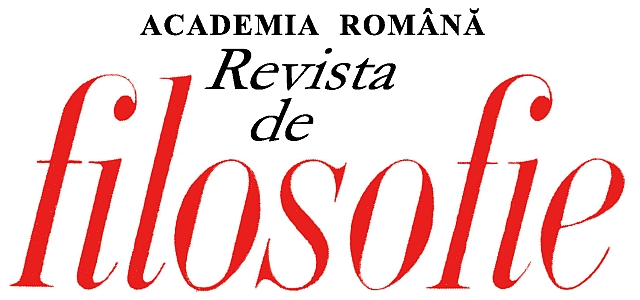
Keywords: Leibniz; monadology; characteristica univeralis; mind-body problem; harmonia praestabilita;
The article overviews some of philosophical contributions Leibniz’s to metaphysics and the philosophy of language: the communication of the monads, the total knowledge, and the issue of harmonia praestabilita in the context of language.
More...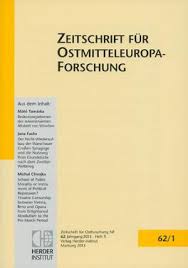
Keywords: medieval kings; visual representations; national narratives; historical imagery; cultural memory; Poland; Hungary; Bohemia;
The popular early modern catalogues of rulers proliferated literary and visual representations of the shared Polish, Bohemian and Hungarian medieval kings that were specific and intelligible to a particular kingdom’s political community. The article examines the dissimilar images of the two last Přemyslid kings, Wenceslas II (1271-1305) and Wenceslas III (1289-1306), as well as of Louis of Anjou (1326-1382) and Sigismund of Luxembourg (1368-1437), the perception of whom differed along political lines. The textual and iconographic analyses of the corpus of 25 catalogues, written by Polish, Czech, Hungarian, Austrian and German authors of four different denominations, demonstrate that the representations of the shared kings, even if colored by current agendas and the changing interests and expectations of their readers, remained virtually unchanged throughout the centuries. The cohesion of their representations resulted from the selection and use of a limited number of sources and models, namely medieval chronicles (in the case of texts), and royal seals or other official royal representations (in the case of images), closely connected and relevant to the particular political communities. In the cases when stylistic features had changed and adjustments had been introduced into the iconography of the royal insignia and heraldic programs, the faces depicted in the catalogues, which were well known to the particular community, remained the same. The popularity and omnipresence of the catalogues in early modern East Central Europe facilitated the broad internalization of the kings’ lives and likenesses and supported the differentiation of historical memory and national narratives in the kingdoms of Poland, Bohemia and Hungary, which still resonate in the popular knowledge of Poles, Czechs and Hungarians about these kings today.
More...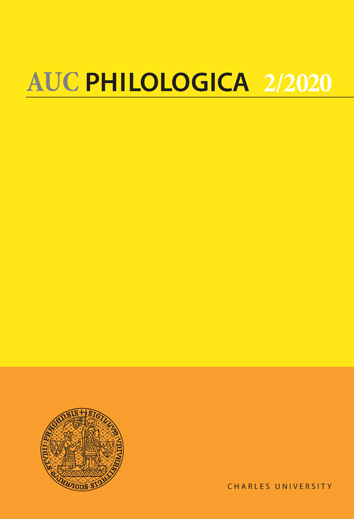
Keywords: colonate; Elbe; Germans; Historia Augusta; Klaus-Peter Johne; Prosopographia Imperii Romani; prosopography; Tacitus (emperor)
This is a detailed discussion of the volume of collected studies of the wellknown classicist Klaus-Peter Johne which was published in 2007. It offers a summary of the individual papers, a discussion of their contents, and several additions to the list of publications, which is a useful bibliographical tool. Together with a short assessment of Johne’s contributions in the context of the scholarship of the German Democratic Republic, some general methodical remarks are offered on the concept of a volume of collected studies.
More...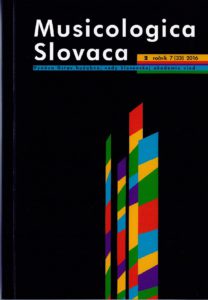
Keywords: composer; life; biography; family; employment;
This article summarises the results of the latest research focused on the biography of the Slovak composer Tadeáš Salva (1937–1995). Salva is regarded as one of the most important figures in Slovak music in the second half of the 20th century. The research draws upon hitherto unpublished works, verifying the existing facts and presenting new information on the composer’s life. Tadeáš Salva was born in the village of Lúčky, where he spent his childhood and derived his first musical inspirations. During his music studies in Žilina, Bratislava and Katowice, and following their conclusion, Salva worked in various positions in institutions in Dolný Kubín, Liptovský Hrádok, Martin, Košice, Bratislava and Nitra. He died at the age of 57 in circumstances which have never been clarified. He is buried in his native village, on the plot belonging to his work studio, close to the family home.
More...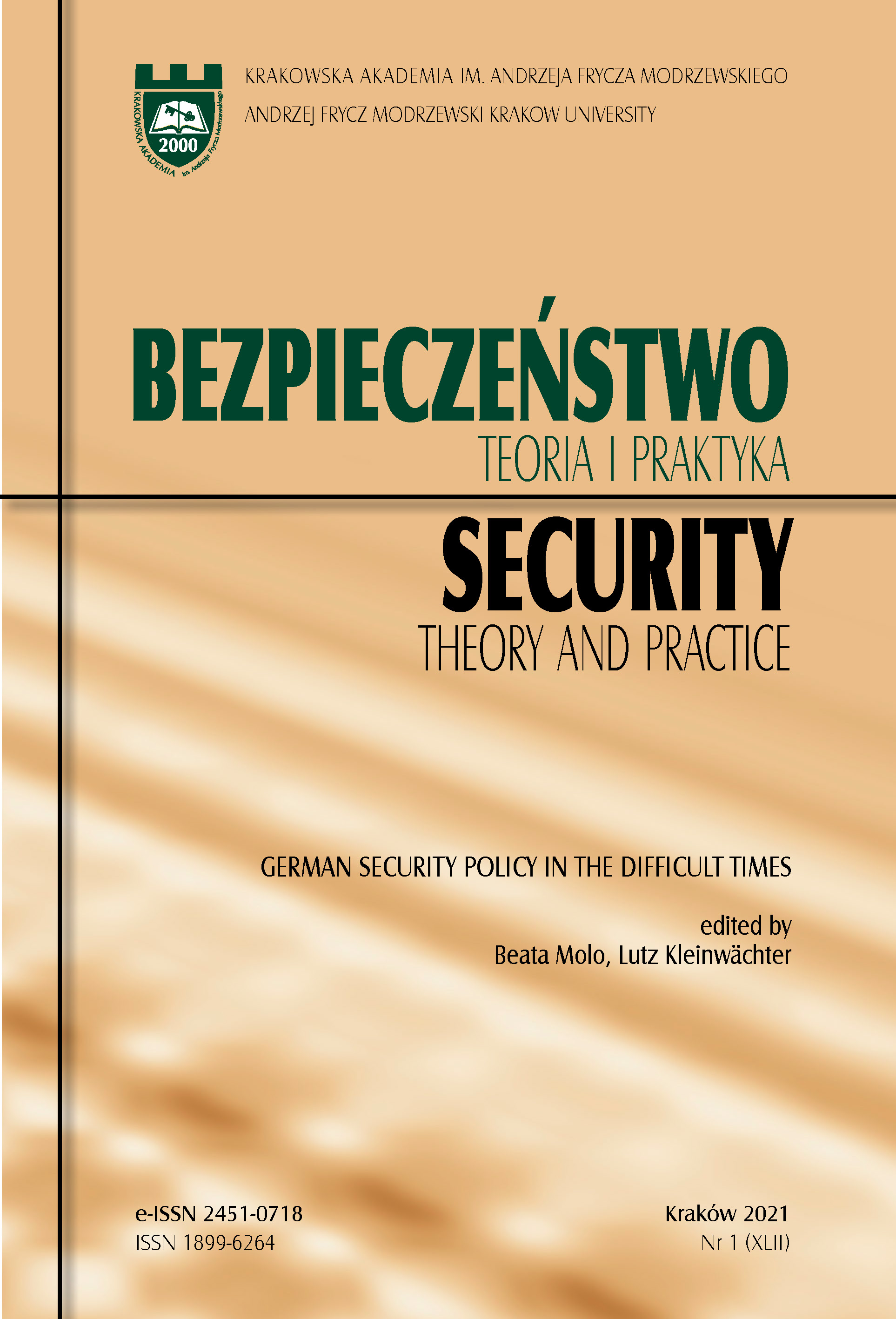
Keywords: Federal Republic of Germany (FRG); German Democratic Republic (GDR); opinion polls; Federal Intelligence Service (BND)
After the establishment of the GDR, West German researchers began to study the politicaland social attitude of GDR citizens, and the processes that were taking place there.Due to the changes taking place in the GDR and the difficulties in conducting direct observations,it was decided to take non-standard actions, and to develop special proceduresthat combined direct survey research with indirect research. At the lead of this theresearch efforts were two institutions: Infratest – Markt- und Meinungsforschungsinstitutfrom Monachium and Bundesnachrichtendienst (Federal Intelligence Service). Amongother things, they studied the reactions to current events: for example, for top-level visits, and in particular FRG-DGR contacts, citizens’ identification with the East German state, restrictionsand facilities in traveling to FRG, as well as the assessment of the economic situationof GDR citizens.
More...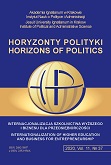
Keywords: perpetual peace; philosophical project; politics and philosophy; theory and practice;
RESEARCH OBJECTIVE: The aim of this paper is an analysis of Kant’s project of perpetual peace in point of view his philosophical and political concequences. THE RESEARCH PROBLEM AND METHOD: The main problem undertaken in this text is to show the role of theretical thinking (dreaming) and its political (real) implications. Immanuel Kant and his critical philosophy set a new path of philosophical reflection in modern times. In principle, philosophizing after Kant has been impossible without reference to his thought (whether in a positive or negative sense). Kant’s achievements also included political reflection. An important place in this reflection it seems to be to define the general purpose of humanity, which, according to Kant, is the pursuit of eternal peace. THE PROCESS OF ARGUMENTATION: The article attempts to describe Kant’s peaceful project from the perspective of the problem of its feasibility. This issue reveals the fundamental problem of reflection on politics, that is, relating theory to practice. RESEARCH RESULTS: Philosophy is purely intellectual speculation whose ideas relate to the practice of political life. In this context, one can consider whether the “dreams” of theoretician philosophers have any application in the practical (real) world. CONCLUSIONS, INNOVATIONS, AND RECOMMENDATIONS: The conclusions attempt to show the priority of theoretical reflection over the practical implementation of political concepts in social life. Kant as a philosopher shows that the ideas and various goals facing man and society make sense only as a priori postulates that become real goals to accomplish.
More...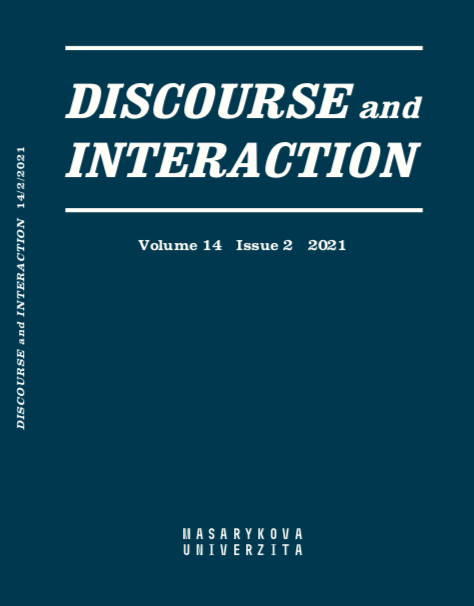
Keywords: food discourse; restaurant reviews; corpus linguistics; keywords; multi-word terms; lexical bundles
This paper presents a corpus linguistic analysis of recurrent vocabulary and phraseology in written English food discourse. More specifically, it focuses on the use and discourse functions of keywords, key multi-word terms and lexical bundles in a specialized corpus comprising 200 professional restaurant reviews that were published in online editions of selected British and American newspapers. The results of the study indicate that the most distinctive lexical feature of the analyzed texts is the frequent mention of ingredients and the limited presence of stance devices. The most frequently mentioned aspects of the referential content also show that what is evaluated is the total experience of eating and dining at a restaurant. These findings contribute to the area of English for Specific Purposes, offering pedagogical potential that can be exploited when developing purpose-made teaching materials for students in food-related programs who need to learn the specialized vocabulary of their target profession.
More...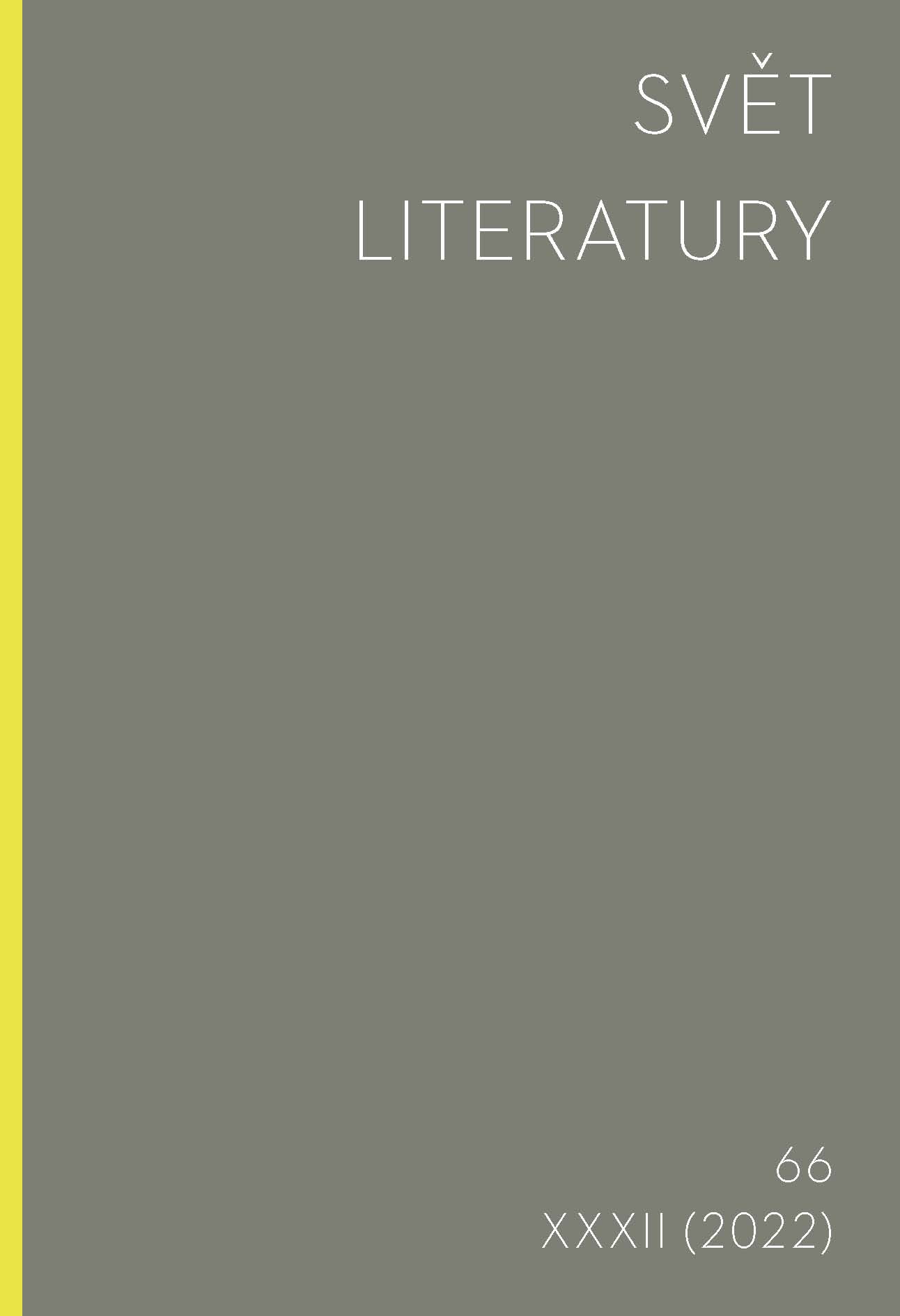
Keywords: Octavia Estelle Butler; Parable of the Sower; ecocriticism; ecofeminism; eco-apocalypse
More...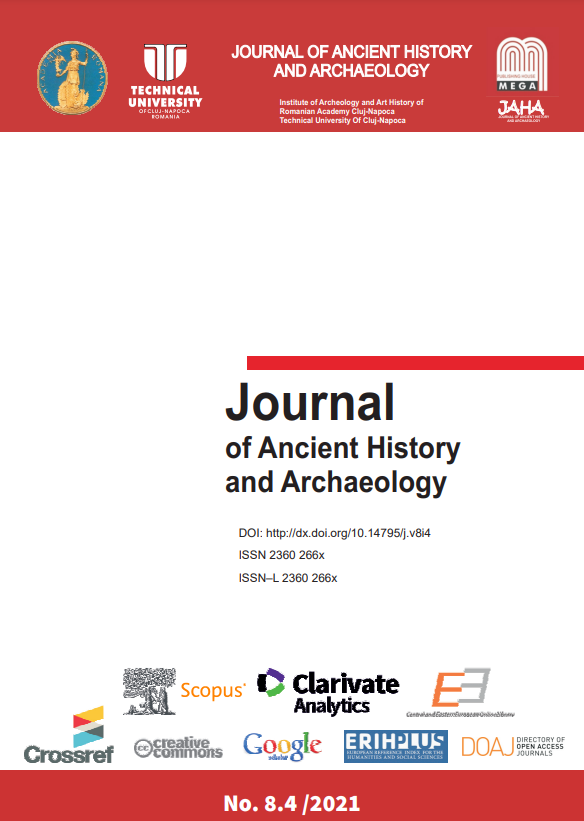
Keywords: Capidava; Topalu; milliarium; Moesia inferior; limes; Aurelian; Carpi; Scythia; Dobrudja;
The article is focused on the 2nd to 4th century milestones recorded by archaeological excavations at Capidava and within a range not exceeding 15 miles, as the crow flies. Our inquiry pinpointed several finds from Dorobanțu, Seimenii Mari, Capidava and the nearby Topalu (10 pillars), set up on the occasion of the road construction works under emperors Hadrian (?), Antoninus Pius and Septimius Severus, Aurelian, by the Tetrachs and, finally, during Constantine. One should highlight the find cluster of Aurelian’s milliaria in the area Topalu – Capidava (3 out of 10 referred supra, comparable in Moesia Inferior only to the situation from around Sexaginta Prista). Considering that unusual clustering, as well as all archaeological pieces of evidence we have for now on the begining of the general reconstruction of the castellum at Capidava under Aurelian and Probus, at the end of the bellum Scythicum, one might rightly infer a local major event. To such an interpretation, a well-known building inscription (Bauinschrift, CIL III 12456 = ISM IV 88) from Durostorum honored Aurelian for bringing the city back to its former splendour (in pristinam splendorem restituta). The inscription was equally and prominently set into one wall to the memory of the war against the Carpi, somewhere inter Carsium et Sucidavam. But what if Capidava and the area around it had actually to do with those fierce battles?
More...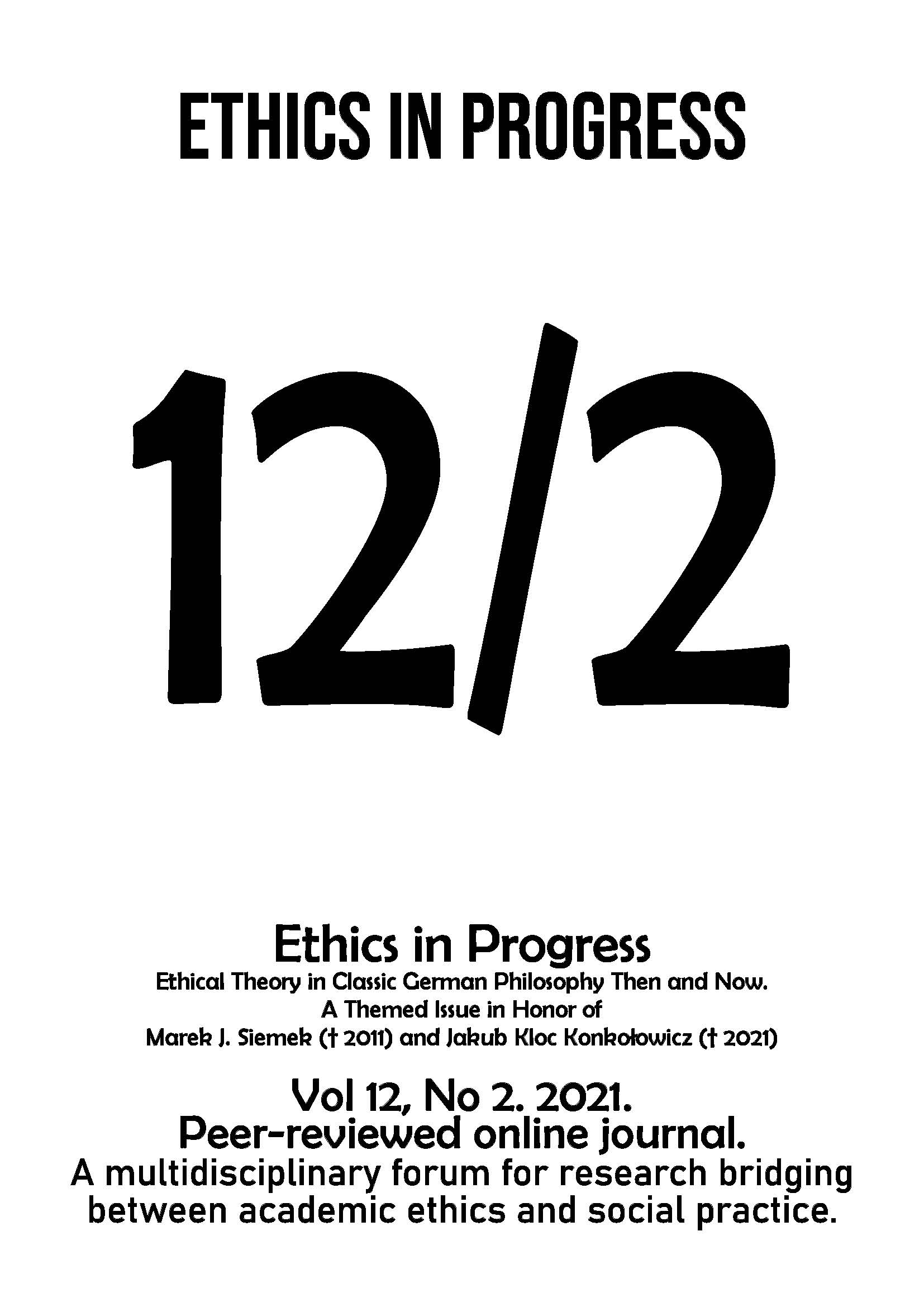
Keywords: Education; genealogy of reason; dignity; vocation; cheerfulness of the heart
In this paper I will focus on education as the core function of reason in Kant and Fichte. The notion of reason carries an intrinsic tendency to universality, which is difficult to be reconciled with its local (cultural, historical, anthropological) background and actualisation. I believe that the stress on the importance of learning, which can be seen in the works of both Kant and Fichte, might provide useful clues to approaching the relation between universality and particularity. I will start by focusing on Kant’s narration on the genealogy of human reason in the Conjectural Beginning of Human History, and then move on to the critical writings and selected lectures in order to focus on the role of human dignity and ethical education for the moral appraisal and the practice of virtue. Later, I will consider Fichte’s lectures on the Vocation of the Scholar, the Vocation of Man and The Characteristics of the Present Age, which are crucial to understanding the social, ethical and political role of the scholar. For Fichte, education is the best instrument to eradicate selfishness, regarded as a historical phenomenon which can lead a nation to ruin. I will then provide some conclusions concerning the two accounts and their implications.
More...